List of Texas Milkweeds
Texas Milkweed Species to Include in your Butterfly Garden
There are thirty-seven species of native Texas milkweeds (Asclepias spp.) that can be grown for Monarch Butterflies and other insects. Milkweeds are an important host species for Monarch, Queen, and Soldier Butterflies. The Monarch butterfly in particular uses the cardenolides found in the milky sap of milkweeds to give an unpleasant taste to predators. These plants are also an important nectar source to all insects visiting your pollinator garden.
List of Texas Milkweeds
1. Clasping Milkweed (Asclepias amplexicaulis), a Milkweed for Dry Soils
Clasping Milkweed (Asclepias amplexicaulis): Clasping milkweed is native in the central and eastern counties of Texas (Kartesz 2015). In the wild, this milkweed grows in dry woodlands, prairies, meadows, and roadsides having sandy or gravelly soil. Growing up to 3 feet tall, this plant has greenish-pink, red, brown, to purple flowers that bloom from March to September.
In a Texas butterfly garden, clasping milkweed is hardy in zones 3-9 and can be grown in places with full sun to part-shade having dry sandy soil. Seeds of clasping milkweed can be purchased in the McMullen House Bed & Breakfast Garden Shop.
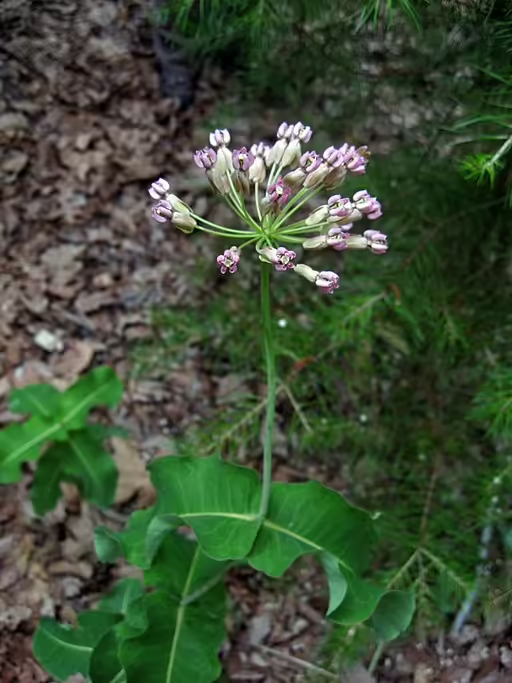
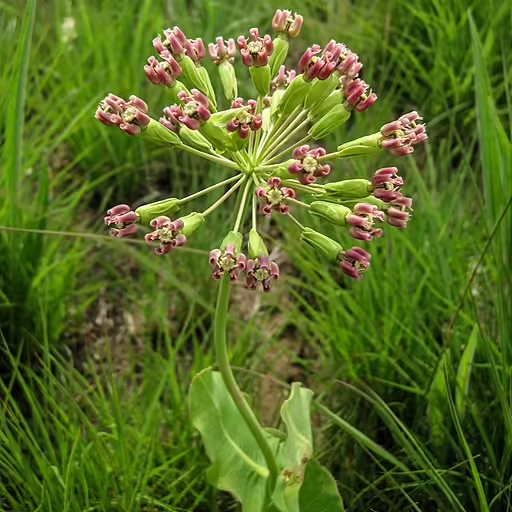

2. Western Sand Milkweed (Asclepias arenaria), a Milkweed for Sandy Soil
Western Sand Milkweed (Ascelpias arenaria): Western sand milkweed is native with a scattered distribution in the central and northern counties of Texas (Kartesz 2015). In the wild, western sand milkweed grows in open places such as fields, pastures, dunes, sandhills, and roadsides. Growing up to 3 feet tall, and has pale-green to greenish-white flowers having a purplish hue that bloom from May to October.
In a Texas butterfly garden, western sand milkweed requires sandy well-drained soil in full sun and is hardy in zones 4-9. Seeds of western sand milkweed can be purchased in the McMullen House Bed & Breakfast Garden Shop.
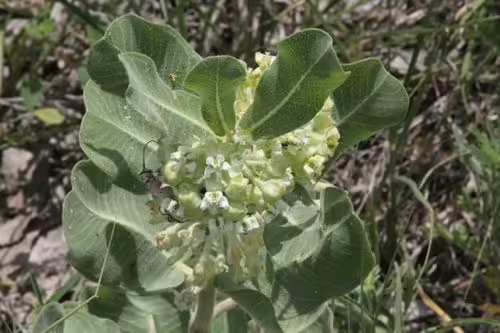

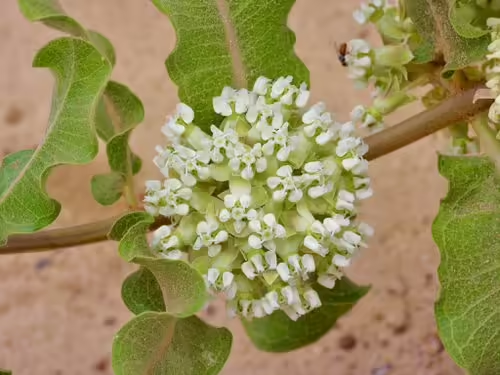
3. Spider Milkweed (Asclepias asperula), a Milkweed for Dry Soils
Spider Milkweed (Ascelpias asperula): Spider milkweed is native throughout Texas, except for the eastern counties (Kartesz 2015). Spider milkweed has two subspecies, one of which, subspecies capricornu is in Oklahoma. In the wild, spider milkweed is found in dry open habitats such as desert swales and scrub and pastures. Growing from 1 to 3 feet high, the cream-green flowers bloom from April to June and it is hardy in zones 5-9.
In a Texas butterfly garden, spider milkweed requires a full sun exposure with dry and/or rocky soils. Seeds of spider milkweed can be purchased in the McMullen House Bed & Breakfast Garden Shop.
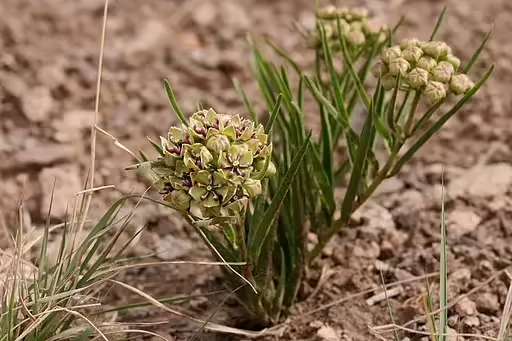
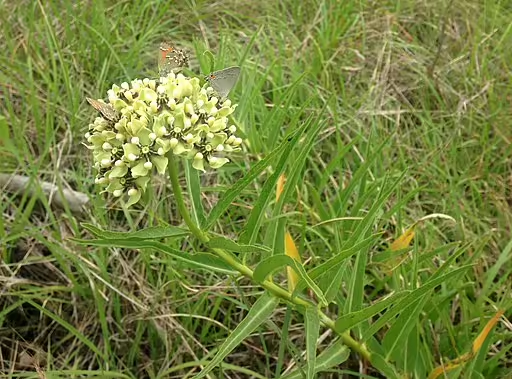

4. Bract Milkweed (Asclepias brachystephana), a Milkweed for Dry, Well-drained Soils
Bract Milkweed (Ascelpias brachystephana): Bract milkweed is native in the western counties of Texas (Kartesz 2015). In the wild, bract milkweed is found on dry mesas and disturbed areas with sandy soil. Growing from 0.5 to 2 feet high, it has red, pink, purple to greenish-purple flowers that bloom from April to September.
In a Texas butterfly garden, bract milkweed requires full sun with dry sandy soils and is hardy in zones 6-10.


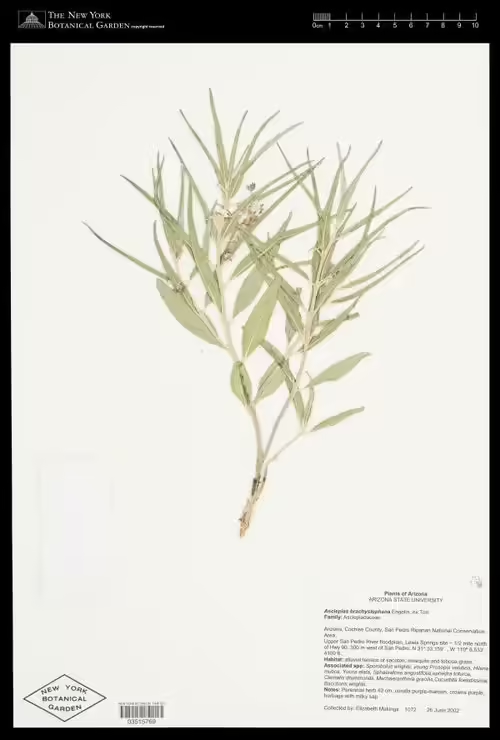
5. Emory’s Milkweed (Asclepias emoryi), a Milkweed for Dry Sandy and Limestone Soils
Emory’s Milkweed (Ascelpias emoryi): Emory’s milkweed is native to the central and southern counties of Texas (Kartesz 2015). In the wild, Emory’s milkweed grows in sandy prairies and disturbed places such as roadsides and railways. Growing from 0.3 to 0.6 feet high, it has greenish-white to greenish-yellow flowers that bloom from April to August.
In a Texas butterfly garden, Emory’s milkweed requires full sun with dry sandy and limestone soils and is hardy in zones 7-10.



6. Engelmann’s Milkweed (Asclepias engelmanniana), a Milkweed for Dry Soils
Engelmann’s Milkweed (Ascelpias engelmanniana): This Engelmann’s milkweed is native to throughout Texas except for the southeastern and eastern counties (Kartesz 2015). In the wild, Engelmann’s milkweed is found in dry prairies, canyons and in open woodlands having limestone or sandy soils. Growing from 2 to 5 feet tall, this plant has cream-green flowers that bloom from May to September.
In a Texas butterfly garden, Engelmann’s milkweed requires full sun, dry sandy or limestone soils and is hardy in zones 5-9. Seeds of Engelmann’s milkweed can be purchased in the McMullen House Bed & Breakfast Garden Shop.

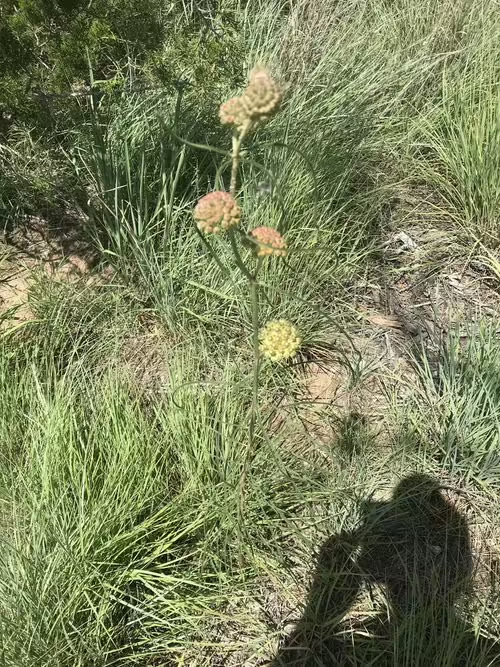

7. Nodding Milkweed (Asclepias glaucescens), a Milkweed for Dry Soils
Nodding Milkweed (Ascelpias glaucesens): Nodding milkweed is native to the southwestern counties of Texas (Kartesz 2015). In the wild, nodding milkweed is found in dry woodlands, rocky slopes, creek beds, and old fields. Growing from 0.5 to 4 feet tall, this plant has white to greenish-cream flowers suffused with red or purple. The flowers bloom from June to September.
In a Texas butterfly garden, nodding milkweed requires full sun and dry soil. It is hardy in zones 7-11.

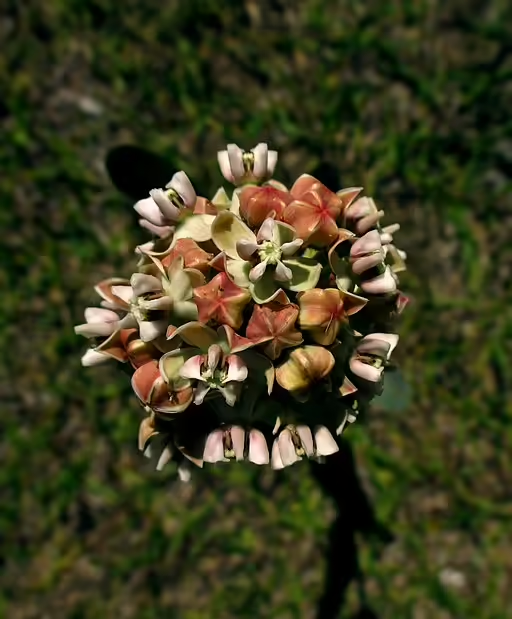

8. Swamp Milkweed (Asclepias incarnata), a Milkweed for Moist Soils
Swamp Milkweed (Asclepias incarnata): Swamp milkweed has two subspecies, ssp. incarnata and ssp. pulchra. The former is native in the center of Texas (hardy in zones 3-9), while the latter is adventive in three counties in Texas (Kartesz 2015). Like the name suggests, in the wild, it is found in wet places including the shores of streams, lakes, ponds, and other wetlands. This is one of the taller milkweeds growing from 3 to 5 feet tall. The flowers, which bloom from July to September are generally a pink to red color, but there is also a white cultivar (pictured below).
In a Texas buttefly garden, swamp milkweed requires full sun to part shade and prefers moist to medium moisture soil, but it can exist in drier soil. Seeds of swamp milkweed can be purchased in the McMullen House Bed & Breakfast Garden Shop.
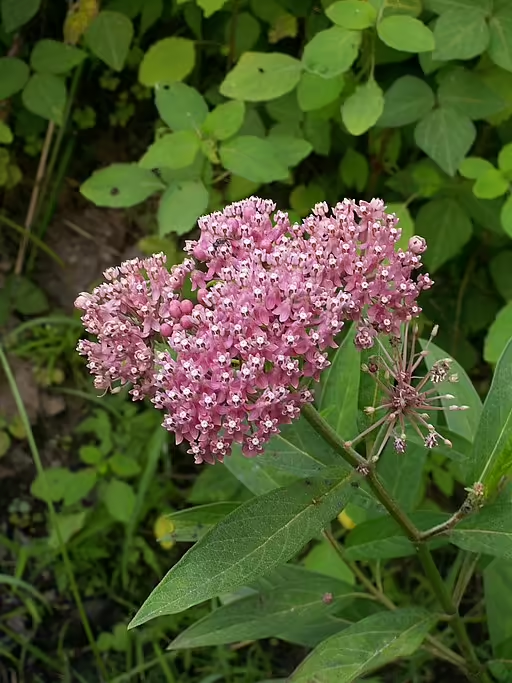

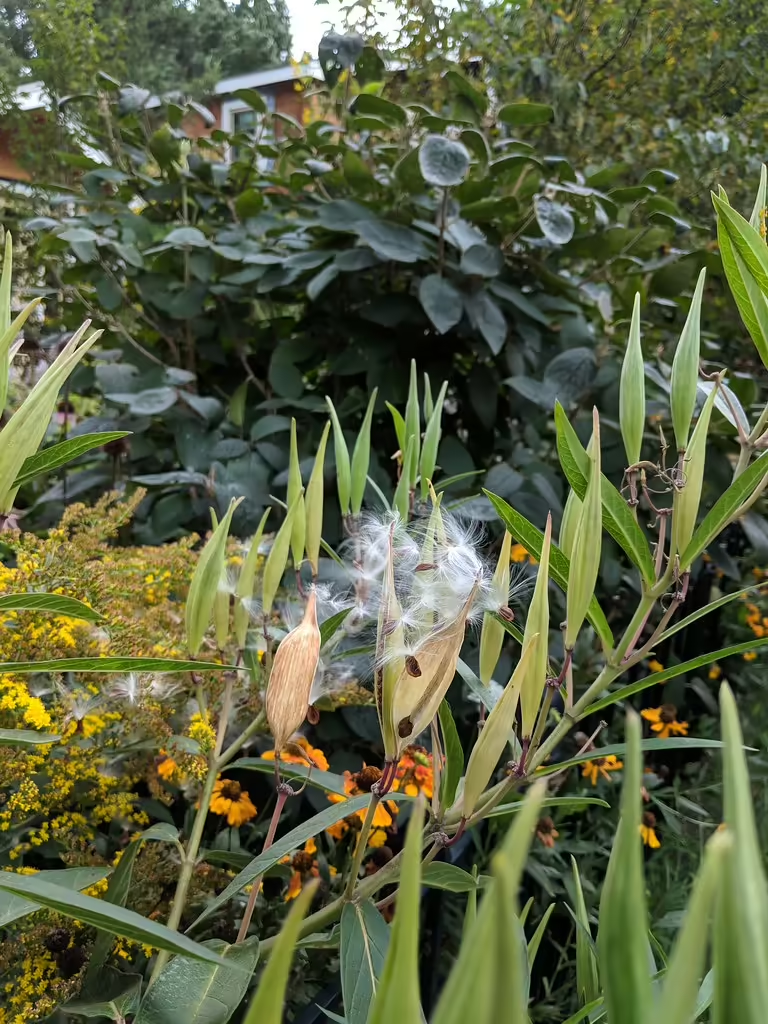
9. Dwarf Milkweed (Asclepias involucrata), a Milkweed for Sandy Well-drained Soils
Dwarf Milkweed (Asclepias involucrata): Dwarf milkweed native and rare in the northern counties of Texas. (Kartesz 2015). In the wild, this species grows on prairies with sandy soil. This is one of the shorter milkweeds growing from 0.5 to 1 foot tall. The flowers, which bloom from May to June, are white to green (Singhurst and Hutchins 2015).
In a Texas butterfly garden, dwarf milkweed requires full sun and well-drained sandy soil. This species is rare in a lot of its range and is likely not in the horticultural trade.

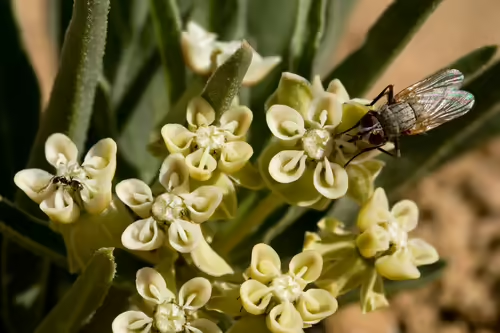

10. Few-flower Milkweed (Asclepias lanceolata), a Milkweed for Moist to Wet Soils
Few-flower Milkweed (Asclepias lanceolata): Few-flower milkweed is native to the southeastern counties of Texas (Kartesz 2015). In the wild, this species grows on prairies, pine barrens, and the edges or marshes. Growing from 2 to 5 feet tall, this few-flower milkweed has yellow, orange, to red flowers that bloom from May to August.
In a Texas butterfly garden, few-flower milkweed requires full sun to part-shade and loamy soils that are moist to wet. It is hardy in zones 5-11.
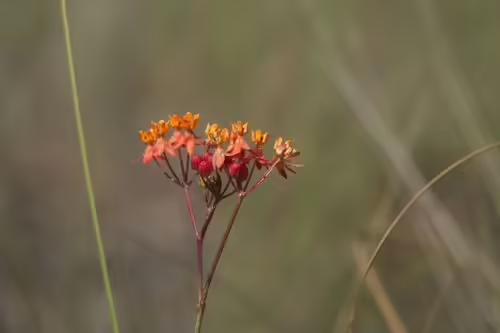
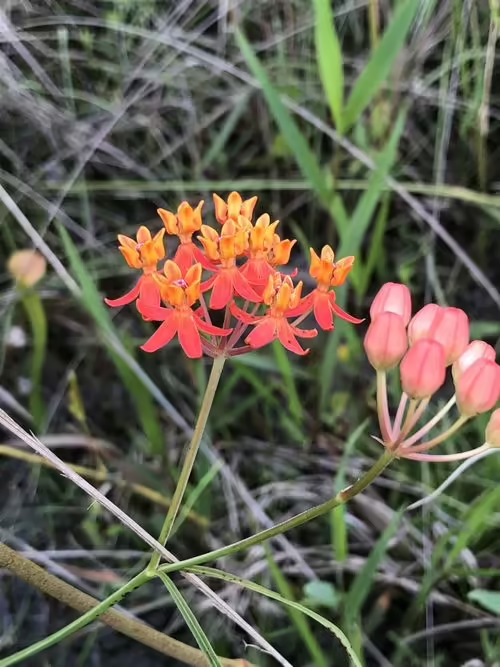
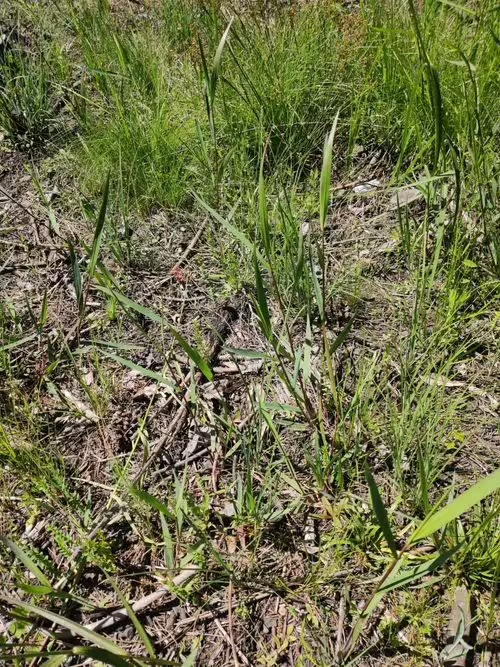
11. Broad-leaf Milkweed (Asclepias latifolia), a Milkweed for Dry Sandy Soils
Broad-leaf Milkweed (Asclepias latifolia): Broad-leaf milkweed is native mostly in the western and northern counties of Texas with a more scattered distribution in the eastern counties (Kartesz 2015). In the wild, broad-leaf milkweed grows in open areas having full sun such as prairies, roadsides, and other right-of-ways. Growing from 1 to 3 feet tall, the greenish to yelllow flowers bloom from May to August.
In a Texas butterfly garden, broad-leaf milkweed is hardy in zones 5-8, and grows best in places having full sun to part-shade with dry sandy soils. Seeds of broad-leaf milkweed can be purchased in the McMullen House Bed & Breakfast Garden Shop.


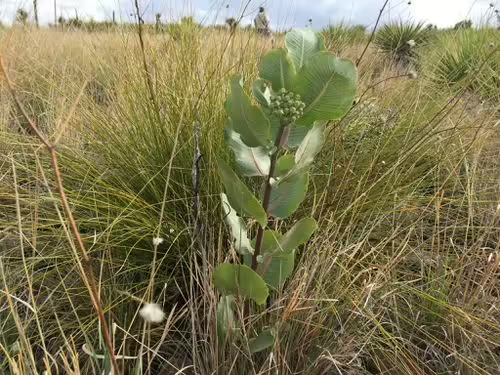
12. Slim Milkweed (Asclepias linearis), a Milkweed for Dry Soils
Slim Milkweed (Asclepias linearis): Slim milkweed is native mostly to the southeastern region of Texas (Kartesz 2015). In the wild, slim milkweed grows in open areas having full sun such as dry prairies and wetlands. It is a short milkweed, growing from 0.5 to 2 feet tall, and has greenish-white flowers that bloom from April to October.
In a Texas butterfly garden, slim milkweed is hardy in zones 8-10 and grows best in places having full sun and dry soils. However it can handle wet conditions in gardens.
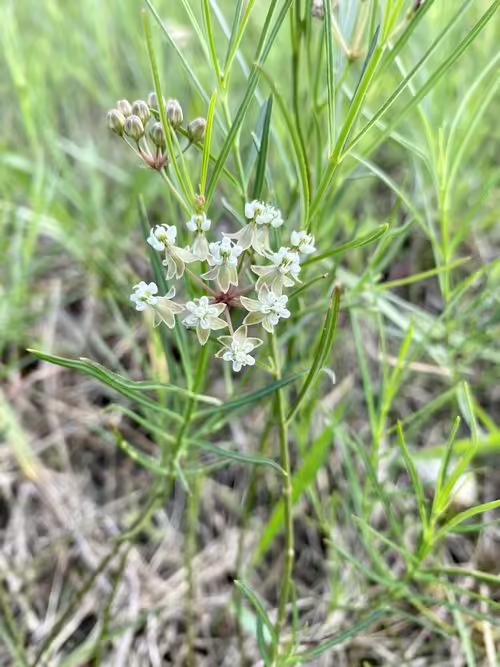
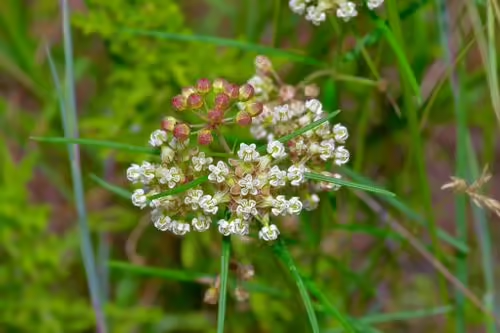
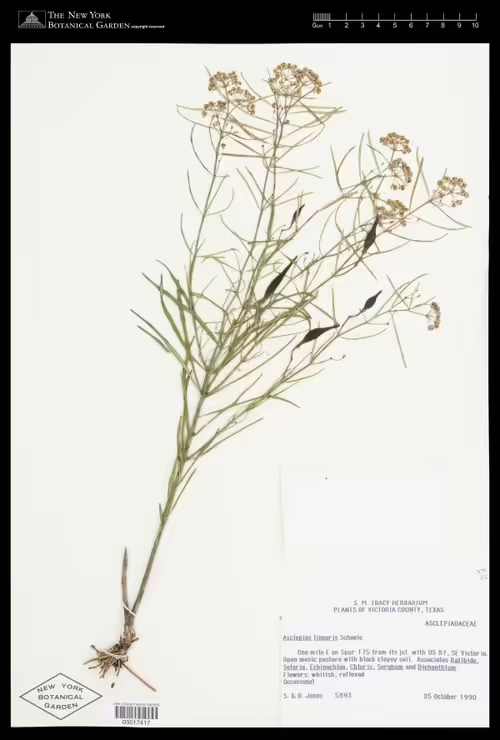
13. Long-leaf Milkweed (Asclepias longifolia), a Milkweed for Moist Soils
Long-leaf Milkweed (Asclepias longifolia): Long-leaf milkweed is native mainly in the southeastern counties of Texas (Kartesz 2015). In the wild, long-leaf milkweed grows in moist areas and wetlands such as bogs, swamps, wet flatwoods, and moist prairies. Growing from 1 to 2.5 feet tall, the greenish-white flowers bloom from April to July.
In a Texas butterfly garden, long-leaf milkweed requires full sun, moist to wet soils, and is hardy in zones 4-9.
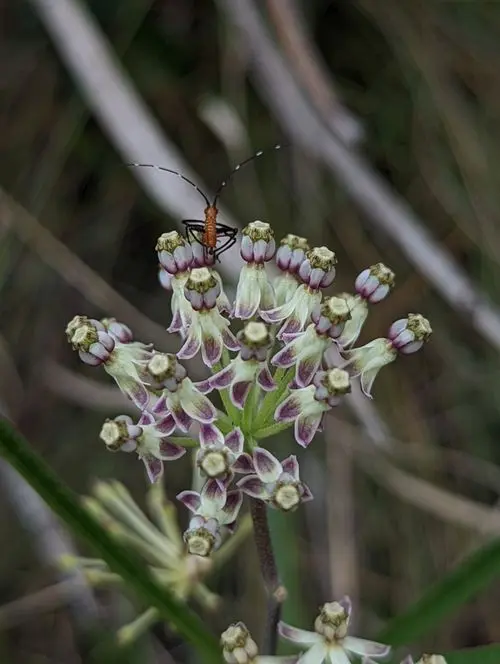

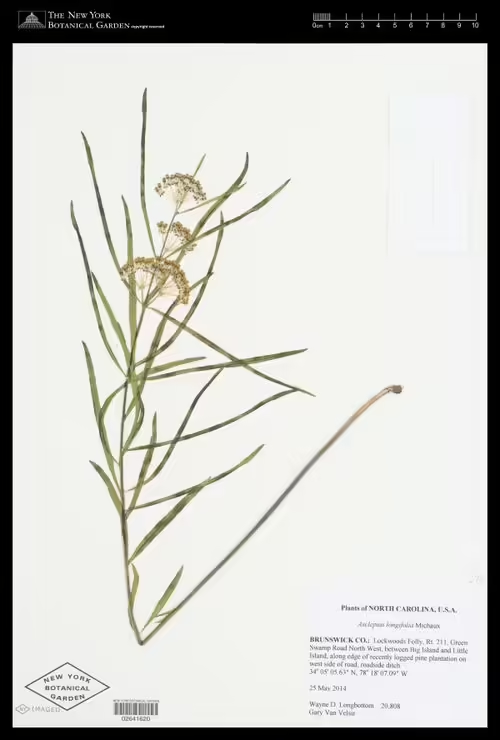
14. Long-hood Milkweed (Asclepias macrotis), a Milkweed for Dry Soils
Long-hood Milkweed (Asclepias macrotis): Long-hood milkweed is native to the western and southwestern counties of Texas (Kartesz 2015). In the wild, long-hood milkweed grows on dry hills and mesas (Woodson 1954) and limestone (Singhurst and Hutchins 2015) having full sun. Growing from 0.3 to 1 foot tall it is among the shortest milkweeds in Texas. The greenish-yellow to yellowish-white flowers bloom from May to October.
In a Texas butterfly garden, long-hood milkweed is hardy in zones 8-10 and requires full sun with dry soils.

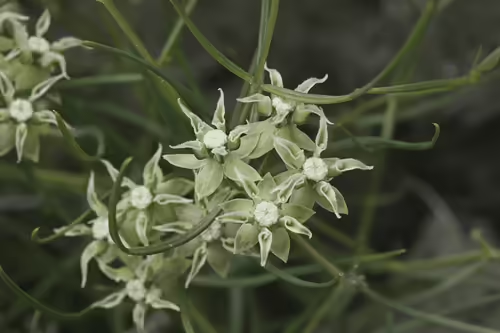

15. Tufted Milkweed (Asclepias nummularia), a Milkweed for Dry Soils
Tufted Milkweed (Asclepias nummularia): Tufted milkweed is native to three southwestern counties of Texas (Kartesz 2015). In the wild, tufted milkweed grows on dry grasslands, rocky places, and woodlands having full sun. Growing from 0.15 to 0.3 foot tall it is the shortest milkweed in Texas and has greenish-white, white, purple to rose flowers that bloom from March to August.
In a Texas butterfly garden setting, tufted milkweed is hardy in zones 8-10 and requires full sun with dry soils.
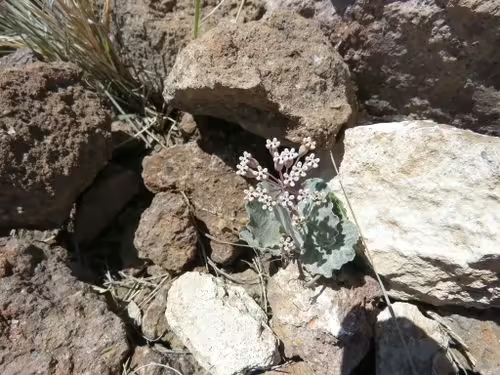
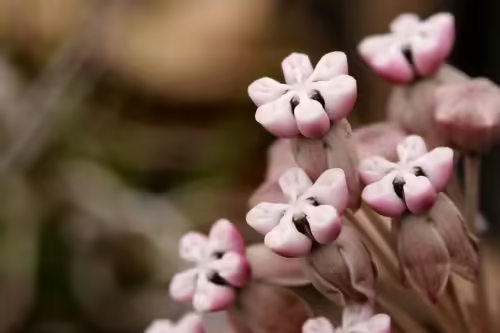
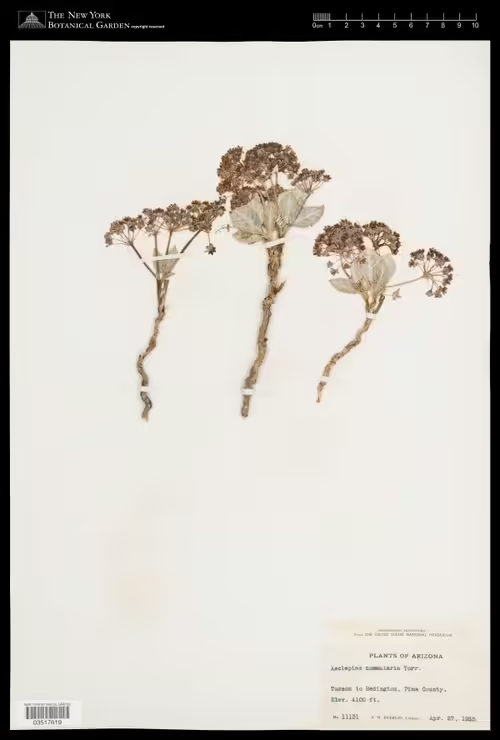
16. Pineland Milkweed (Asclepias obovata), a Milkweed for Well-drained Soils in Sun
Pineland Milkweed (Asclepias obovata): Pineland milkweed is native to the eastern counties and one southern county in Texas (Kartesz 2015). In the wild, pineland milkweed grows, as the name would suggest, on pinelands, but it also can be found on coastal prairies (Singhurst and Hutchins 2015) and on roadsides and fields. Growing from 0.5 to 3 feet tall, this species has greenish-yellow flowers with purplish hoods that bloom from June to October.
In a Texas butterfly garden, pineland milkweed is hardy in zones 7-10 and requires full sun with well-drained soils.


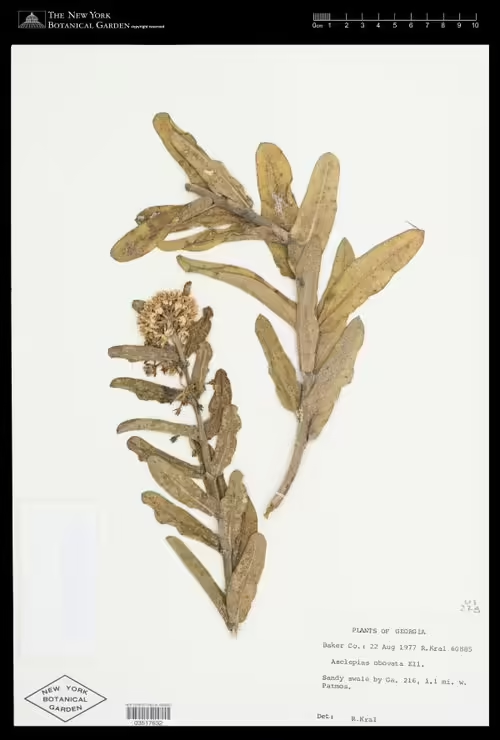
17. Zizotes Milkweed (Asclepias oenotheroides), a Milkweed for Well-drained high pH Soils
Zizotes Milkweed (Asclepias oenotheroides): Zizotes milkweed is native throughout Texas, except for the far eastern counties (Kartesz 2015). In the wild, zizotes milkweed grows on rocky areas with limestone having a high pH. On the coast it can grow in the dunes (Singhurst and Hutchins 2015) and it can also be found in open areas such as fields, thickets, and roadsides (Woodson 1954). Growing from 1 to 2 feet tall, this species has white, greenish-white to yellow flowers that bloom from April to November.
In a Texas butterfly garden, zizotes milkweed is hardy in zones 7-9 and requires full sun to partial-shade with mesic to dry well-drained high pH soils.

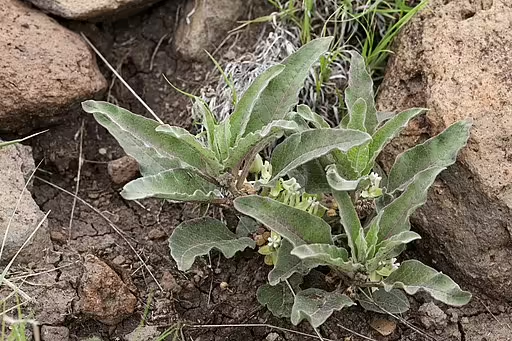

18. Aquatic Milkweed (Asclepias perennis), a Milkweed for Moist Soils
Aquatic Milkweed (Asclepias perennis): Aquatic milkweed is native in the southeastern counties and one county in the east-central area of Texas (Kartesz 2015). In the wild, aquatic milkweed grows on the margins of wetlands such as swamps, alluvial woods, ditches, and marshes. Growing from 1 to 3.5 feet tall, this species has white to pink, purplish-rose or purple flowers that bloom from April to October.
In a Texas butterfly garden, aquatic milkweed is hardy in zones 6-10 and requires full sun to partial-shade with moist soils.
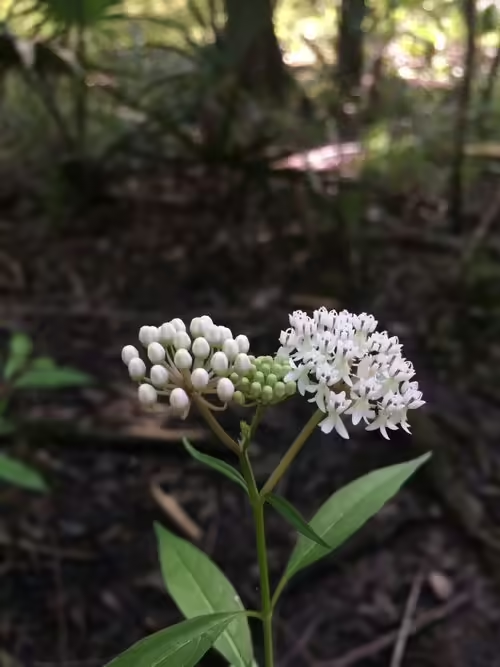
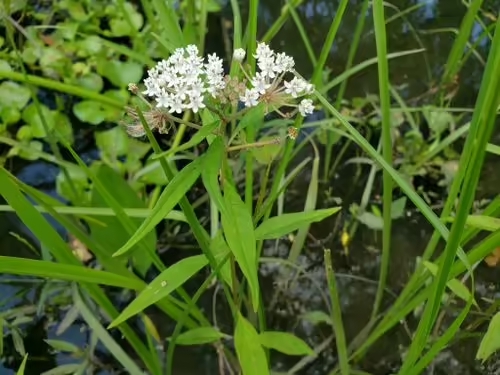
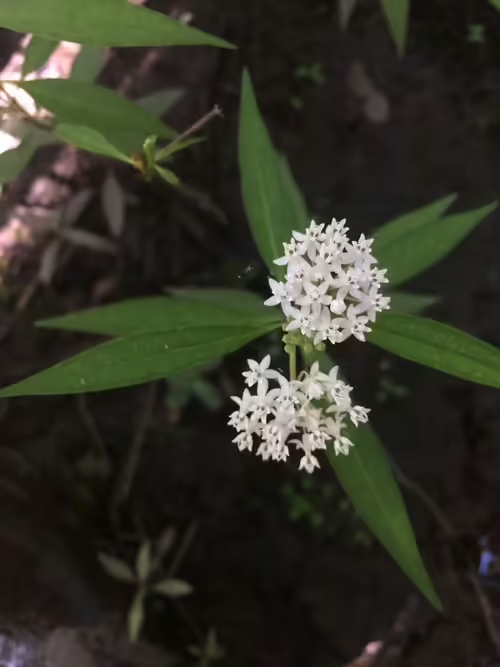
19. Prostrate Milkweed (Asclepias prostrata), a Milkweed for Medium Soils
Prostrate Milkweed (Asclepias prostrata): Prostrate milkweed is native and rare in three southern counties in Texas (Kartesz 2015). In the wild, prostrate milkweed grows in sandy shrublands. Growing from 1 to 1.5 feet tall, this species has greenish-white to rose colored flowers that bloom from April to October. In 2022, this species was proposed to be listed as federally endangered by the US Fish and Wildlife Service.
This plant is rare and proposed for listing as endangered. Gardening is not recommended, but this is a native plant to Texas and is included.
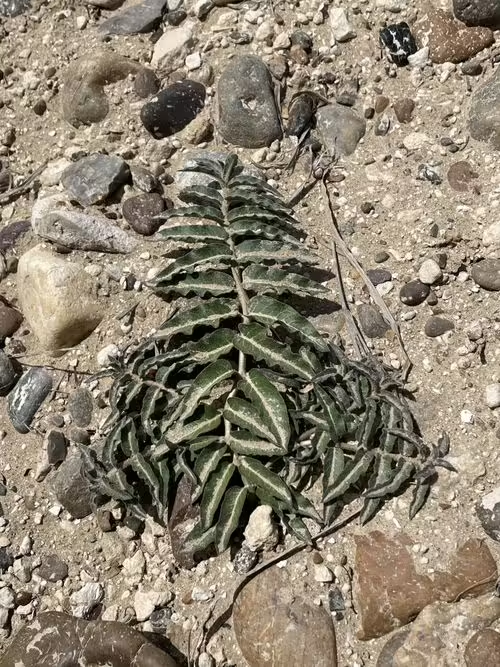
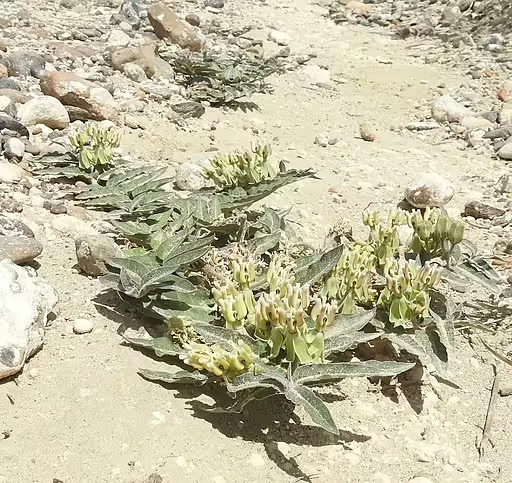

20. Low Milkweed (Asclepias pumila), a Milkweed for Dry Soils
Low Milkweed (Asclepias pumila): Low milkweed is native to the northern counties of Texas (Kartesz 2015). In the wild, low milkweed grows in dry open areas having full sun such as prairies. One of the shorter milkweeds, this plant grows from 0.5 to 1.5 feet tall. The flowers are white, greenish-white or yellowish-white with hints of red and bloom from July to September.
In a Texas butterfly garden, low milkweed requires full sun, dry sandy and/or gravelly soils, and is hardy in zones 5-9.
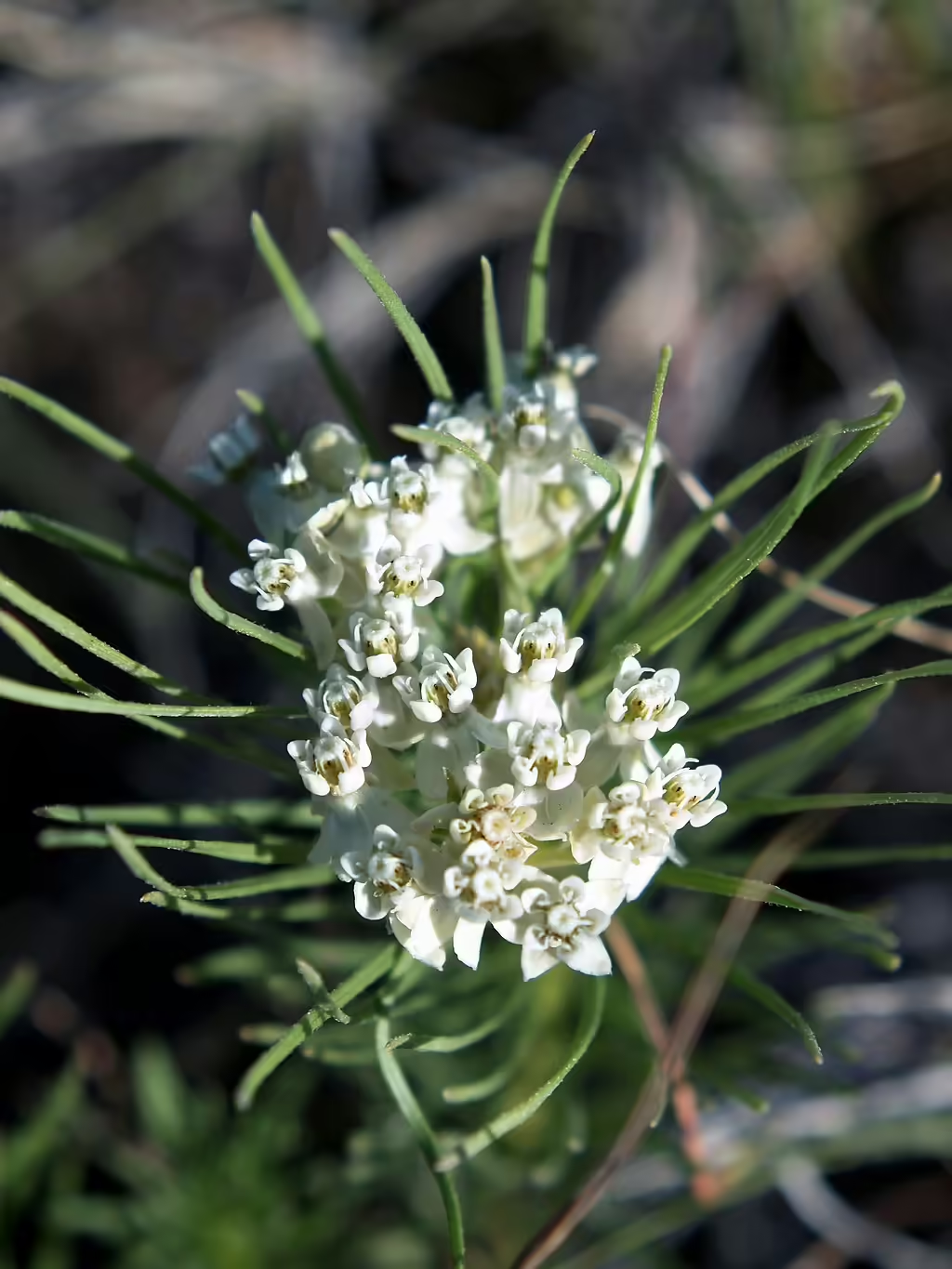
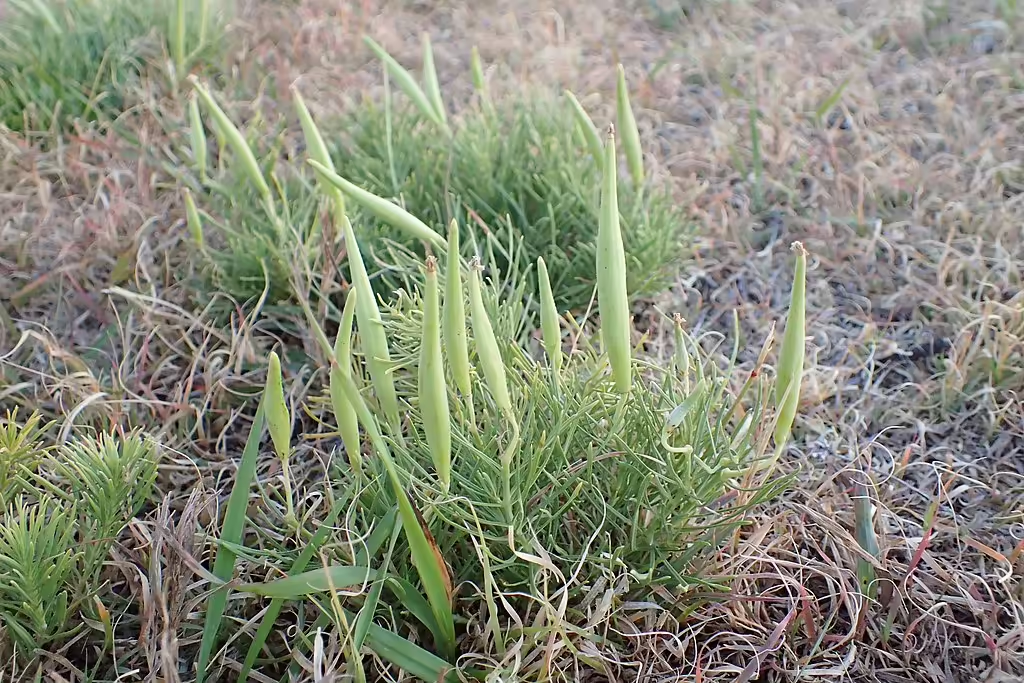

21. Purple Milkweed (Asclepias purpurascens), a Milkweed for Moist Soils
Purple Milkweed (Asclepias purpurascens): Purple milkweed is native to one county in northeastern Texas (Kartesz 2015). In the wild, purple milkweed grows in moist to dry places having full sun to part shade such as swamps, woodlands, meadows, roadsides, and dry fields. Growing up to 6 feet tall, this plant has purple to pink flowers that bloom from May to July.
In a Texas butterfly garden, purple milkweed is hardy in zones 3-8 and requires part shade but can handle full sun. Soils should be moist and well-drained, but dry soil can be tolerated. Seeds of purple milkweed can be purchased in the McMullen House Bed & Breakfast Garden Shop.



22. Red Milkweed (Asclepias rubra), a Milkweed for Wet Soils
Red Milkweed (Asclepias rubra): Red milkweed is native to the eastern and central counties of Texas (Kartesz 2015). In the wild, red milkweed grows in wet open areas such as bogs, wet meadows, and pine barrens (Woodson 1954). Growing from 1 to 3 feet tall, this plant has pink, purple, red to lavender flowers that bloom from May to August.
In a Texas buttefly garden, red milkweed is hardy in zones 6-9 and grows best in places of full sun to part-shade with wet organic soil.
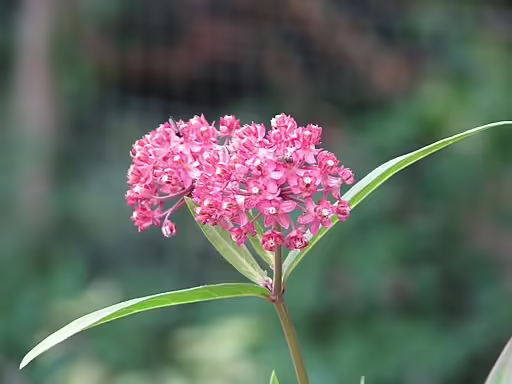

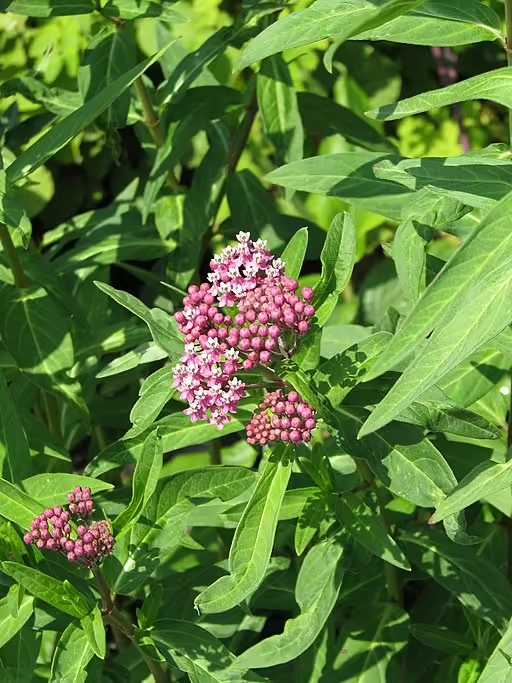
23. Bear Mountain Milkweed (Asclepias scaposa), a Milkweed for High Moisture Soils
Bear Mountain Milkweed (Asclepias scaposa): Bear Mountain milkweed is native to three southwestern counties of Texas (Kartesz 2015). In the wild, bear mountain milkweed grows in shrubland openings that are gravelly, talus slopes (Singhurst and Hutchins 2015), and mountainsides (Woodson 1954). Growing up to 1 foot tall, this plant has rose to purple (Singhurst and Hutchins 2015 and Woodson 1954), to white flowers (Vail 1899) that bloom in April.
In a Texas butterfly garden, bear mountain milkweed is hardy in zones 8-10 and grows best in places of full sun to part-shade with a lot of moisture.

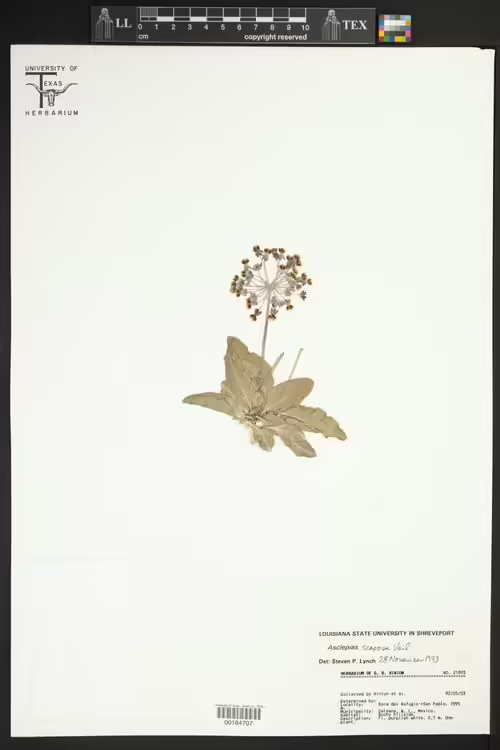

24. Showy Milkweed (Asclepias speciosa), a Milkweed for Medium to Dry Soils
Showy Milkweed (Asclepias speciosa): Showy milkweed is native to the northern counties of Texas (Kartesz 2015). In the wild, showy milkweed grows in mesic to dry open areas such as roadsides, fields, and woodlands. Growing from 1 to 3 feet tall, this plant has purple to pink flowers that bloom from April to June.
In a Texas butterfly garden, showy milkweed is hardy in zones 3-9 and requires places of full sun having medium to dry well-drained soil. Seeds of showy milkweed can be purchased in the McMullen House Bed & Breakfast Garden Shop.



25. Sperry’s Milkweed (Asclepias sperryi), a Milkweed for High pH Soils
Sperry’s Milkweed (Asclepias sperryi): Sperry’s milkweed is native to two southwestern counties Texas (Kartesz 2015). In the wild, Sperry’s milkweed grows in grasslands having limestone (Singhurst and Hutchins 2015) and limestone slopes (Woodson 1954). This milkweed is one of the shortest and grows from 4 inches to 1 foot tall. The greenish-yellow to white flowers bloom from April to August.
In a Texas butterfly garden, Sperry’s milkweed is hardy in zones 7-8 and requires places of full sun to part-shade having high pH soil.

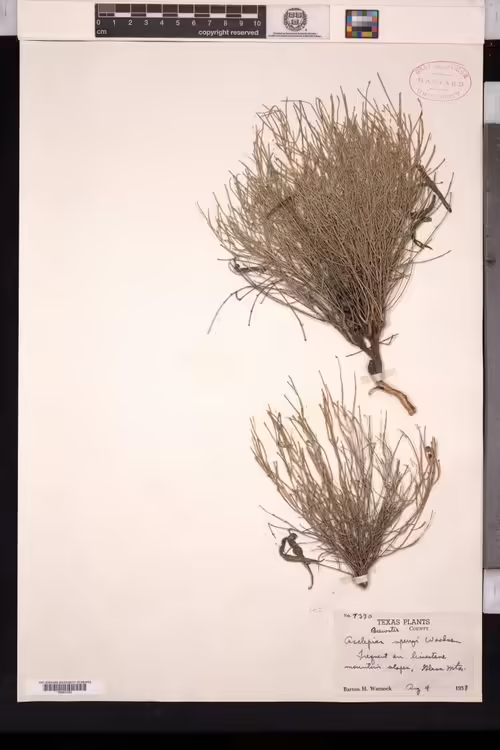
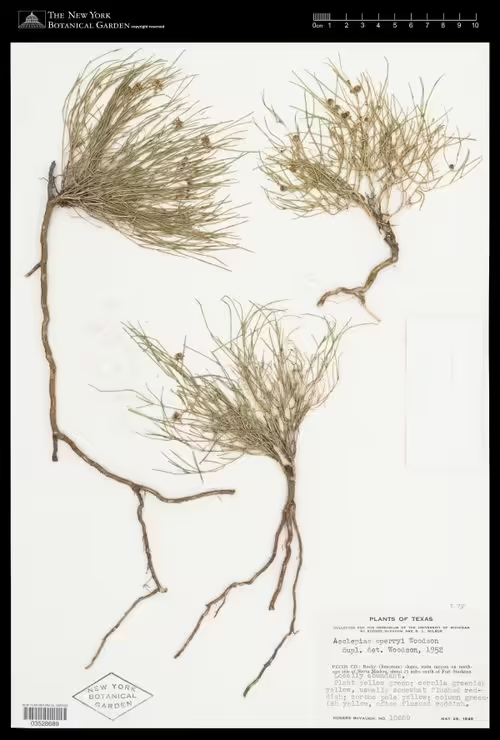
26. Slim-leaf Milkweed (Asclepias stenophylla), a Milkweed for Dry Soils
Slim-leaf Milkweed (Asclepias stenophylla): Slim-leaf milkweed is native in scattered counties, except for the south and southwest of Texas (Kartesz 2015). In the wild, slim-leaf milkweed grows in open areas with full sun such as prairies and sandy areas. Growing from 0.5 to 3 feet tall, this milkweed has greenish-white flowers that bloom from June to August.
In a Texas butterfly garden, slim-leaf milkweed is hardy in zones 3-9 and requires full sun and dry sandy or gravelly soils. Seeds of slim-leaf milkweed can be purchased in the McMullen House Bed & Breakfast Garden Shop.
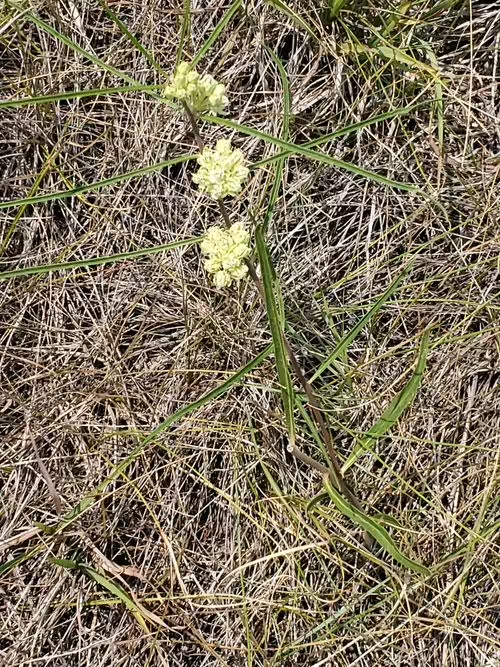


27. Horsetail Milkweed (Asclepias subverticillata),Milkweed for All Soils
Horsetail Milkweed (Asclepias subverticillata): Horsetail milkweed is native mainly in the southwestern counties of Texas with a scattered distribution elsewhere (Kartesz 2015). In the wild, horsetail milkweed grows in open areas with full sun such as rocky plains and flats, roadsides, waste places, and marshes and wet areas. Growing up to 4 feet tall, this milkweed has white to greenish-white flowers that bloom from May to September.
In a Texas butterfly garden, horsetail milkweed is hardy in zones 5-8, requires full sun, and can handle a variety of moisture conditions. Seeds of horsetail milkweed can be purchased in the McMullen House Bed & Breakfast Garden Shop.
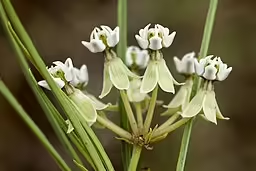
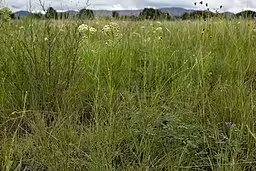

28. Common Milkweed (Asclepias syriaca), a Milkweed for All Soils
Common Milkweed (Asclepias syriaca): Common milkweed is native throughout Texas, but is scattered in the west (Kartesz 2015). In the wild, common milkweed grows in open areas such as fields, pastures, and roadsides, where there is full sun. One of the taller milkweeds, it can grow up to 6 feet tall and has flowers ranging from pink, greenish-purple, greenish-white, to white that bloom from June to August.
In a Texas butterfly garden, common milkweed is hardy in zones 3-9. Seeds of common milkweed can be purchased in the McMullen House Bed & Breakfast Gardenshop.
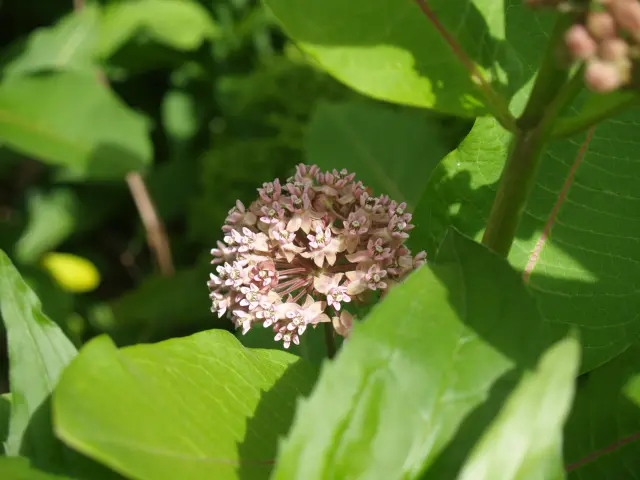

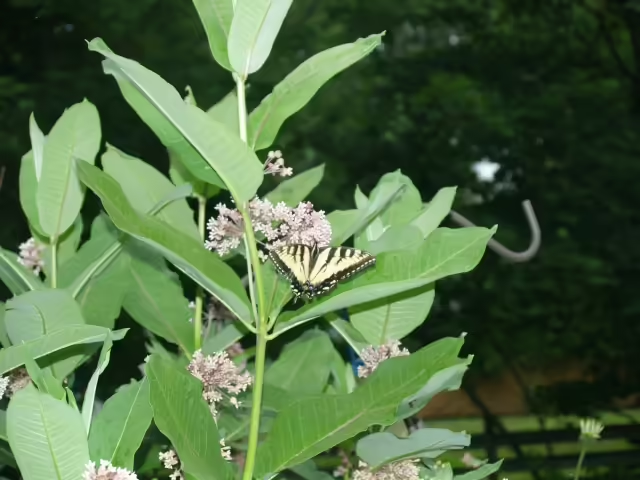
29. Texas Milkweed (Asclepias texana), a Milkweed for Well-drained Soils
Texas Milkweed (Asclepias texana): Texas milkweed is native to the southwestern and central counties of the Texas (Kartesz 2015). In the wild, Texas milkweed grows in canyons, arroyos, and hillsides. It can also be in shaded areas (Quillen 1922). Growing from 0.5 to 3 feet tall, it has white flowers bloom from June to August.
In a Texas butterfly garden, Texas milkweed is hardy in zone 6 and requires full sun to part-shade to well-drained soil.
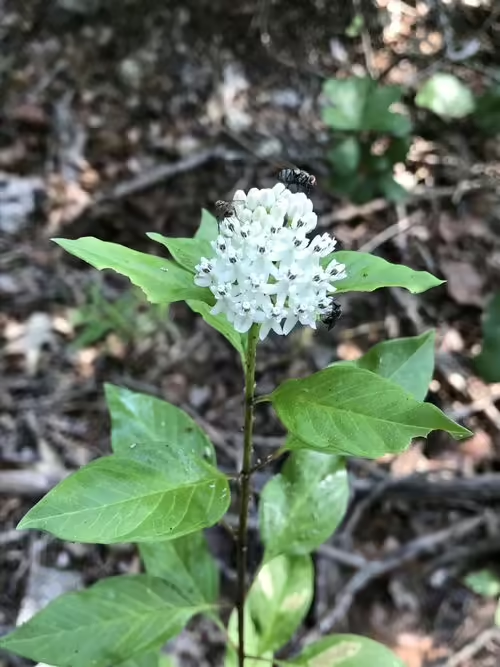
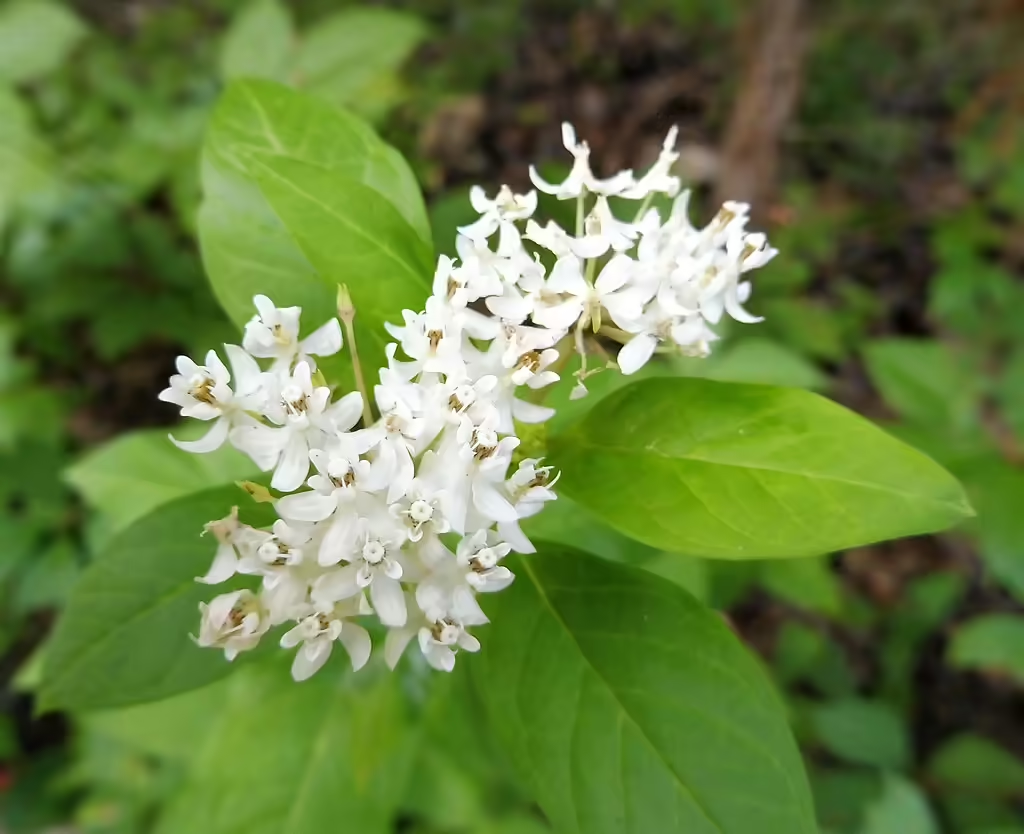

30. Velvetleaf Milkweed (Asclepias tomentosa), a Milkweed for Medium to Dry Sandy Soils
Velvetleaf Milkweed (Asclepias tomentosa): Velvet-leaf milkweed is native to the several counties in the eastern part of Texas (Kartesz 2015). In the wild, velvetleaf milkweed grows in pine woodlands and sandhills. Growing from 2 to 3 feet tall, it has yellow-cream, green flowers that may or may not have a pink to maroon tint. The flowers bloom from April to August.
In a Texas butterfly garden, velvetleaf milkweed is hardy in zones 7-10 and requires full sun in sandy soil that is medium to dry.

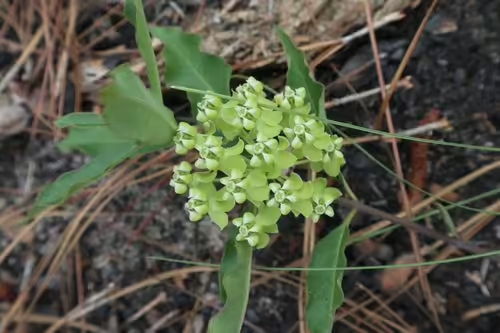

31. Butterfly Weed (Asclepias tuberosa), a Milkweed for All Soils
Butterfly Weed (Asclepias tuberosa): Buttefly Weed is one of the most common for butterfly gardeners on the east coast of the United States. In Texas, subspecies interior of this species grows throughout Texas except for the southern counties (Kartesz 2015). In the wild, butterfly weed grows in open areas with full sun such as fields, roadsides, and open woods. Growing from 1 to 3 feet tall, it has characteristically orange flowers that bloom throughout the summer and sometimes into the autumn.
In a garden setting, butterfly weed is hardy from zones 3-9. Seeds of butterfly weed can be purchased in the McMullen House Bed & Breakfast Garden Shop.
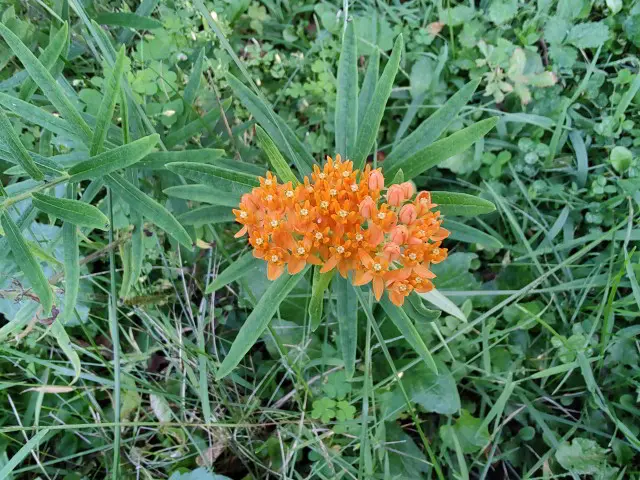
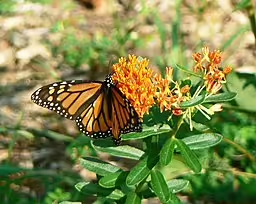

32. Wheel Milkweed (Asclepias uncialis), a Milkweed for Well-drained Soil
Wheel Milkweed (Asclepias uncialis): Wheel milkweed is native to one county, in the south-central part of Texas (Kartesz 2015). In the wild, wheel milkweed grows in open areas with full sun such as shortgrass prairie, sandstone rocks, and pinyon-pine woodlands. Growing from 1 to 2.5 inches tall, it is the shortest milkweed in Texas. In the spring (March to June), the rose-purple to pink flowers bloom. The flowers are noted for their fragrance (Decker 2006).
In a Texas butterfly garden, wheel milkweed is hardy in zones 6-8. This species is rare in all of the states where it is found and is not in cultivation.
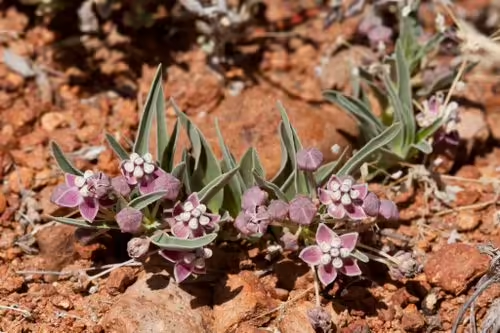


33. Red-Ring Milkweed (Asclepias variegata), a Milkweed for Dry Soils
Red-Ring Milkweed (Asclepias variegata): Red-ring milkweed is native mostly to the eastern part of the state and two counties in the central (Kartesz 2015). In the wild, red-ring milkweed grows in thickets, open woods and roadsides that are dry and rocky/sandy. Growing from 1 to 4 feet tall, it has white flowers with a purple or red ring at the base that bloom from May to July.
In a Texas butterfly garden, red-ring milkweed is hardy in zones 3-9. Seeds of red-ring milkweed can be purchased in the McMullen House Bed & Breakfast Garden Shop.
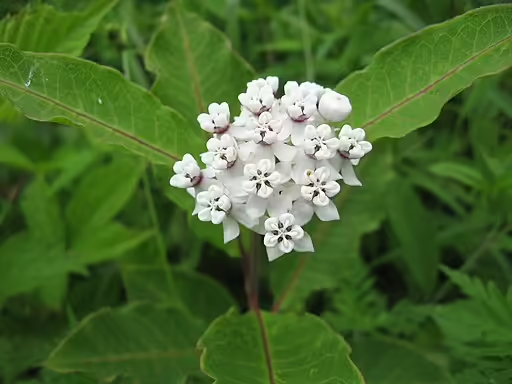
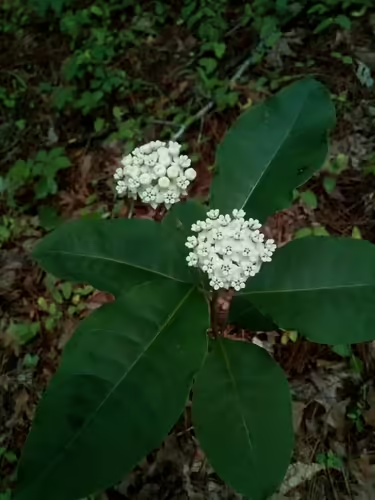

34. Whorled Milkweed (Asclepias verticillata), a Milkweed for Medium to Dry Soil
Whorled Milkweed (Asclepias verticillata): Whorled milkweed is native mainly in the eastern counties of the state with scattered locations elsewhere (Kartesz 2015). Whorled milkweed has green to white flowers that bloom from May to September. In the wild, like a lot of other milkweeds, it grows in open areas such as meadows and fields, taking advantage of full sun.
In a Texas butterfly garden, whorled milkweed is hardy in zones 3-9, requires full sun to part shade, and medium to dry soil. Seeds of whorled milkweed can be purchased at the McMullen House Bed & Breakfast Garden Shop.

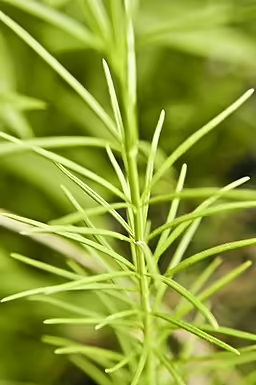

35. Green Comet Milkweed (Asclepias viridiflora), a Milkweed for Medium to Dry Sandy Soils
Green Comet Milkweed (Asclepias viridiflora): Green comet milkweed is native throughout the state (Kartesz 2015). In the wild, it grows in open areas such as meadows and fields having full sun. Growing up to 3 feet tall, it has flowers that start out green and age to become yellow and purple tinged that bloom from June to August.
In a Texas butterfly garden, green comet milkweed is hardy in zones 3-9, requires full sun to part shade, and medium to dry sandy soil. Seeds of green comet milkweed can be purchased at the McMullen House Bed & Breakfast Garden Shop.
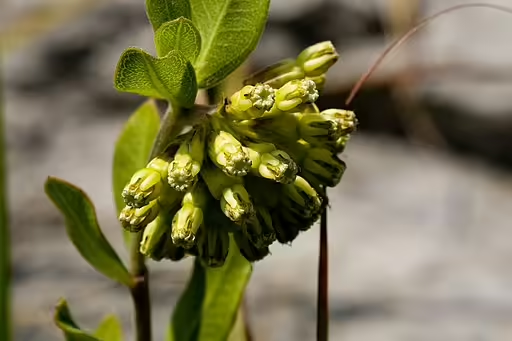
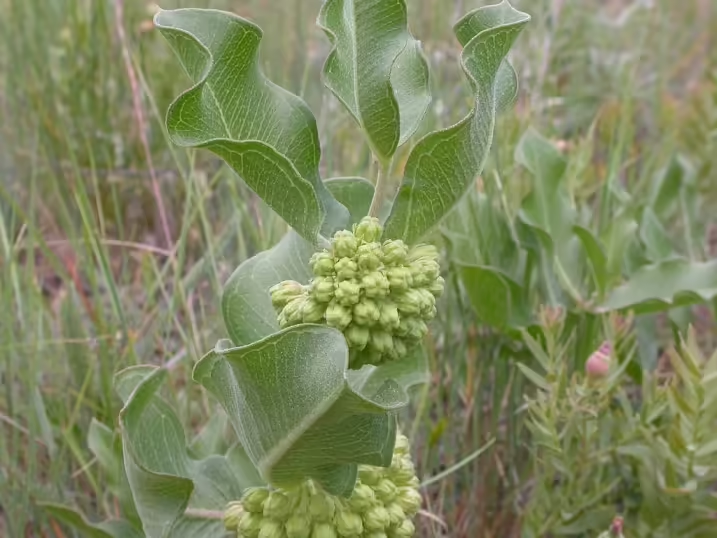

36. Green Milkweed (Asclepias viridis), A Milkweed for Medium to Dry High pH Soils
Green Milkweed (Asclepias viridis): Green milkweed is native to the eastern half of the state (Kartesz 2015). In the wild, green milkweed grows in open areas such as glades, prairies, roadsides, and pastures where there is full sun. Growing from 0.5 to 2 feet tall, it has green, yellowish-green, or white flowers that bloom from April to October.
In a Texas butterfly garden, green milkweed is hardy in zones 5-9 and requires medium to dry soils having a high pH. Seeds of green milkweed can be purchased at the McMullen House Bed & Breakfast Garden Shop.



Additional Texas Milkweed that is Adventive to the State
Adventive Species 1. Tropical Milkweed (Asclepias currasavica), a Milkweed for Places of Disturbance
Tropical Milkweed (Asclepias viridis): Tropical milkweed is adventive to the southeastern and southern counties of Texas (Kartesz 2015). In the wild, tropical milkweed grows in places of disturbance such as roadsides, railroads, and fields, where there is full sun. Growing from 2 to 3 feet tall, it has orange, yellow or red flowers that bloom from June to October, but can bloom for longer periods in warmer locations.
In a Texas butterfly garden, this milkweed is hardy in zones 8-11, requires full sun and well-suited to garden situations. This plant has been introduced to Texas mainly because of the brilliant flowers and it popularity with butterflies.



When selecting your Texas milkweed, be sure to make sure it grows in your zone and habitat.
References for Texas Milkweeds
- Decker, K. 2006. Asclepias uncialis Greene (wheel milkweed): a technical conservation assessment. US Forest Service, Rocky Mountain Region.
- Kartesz, J.T. The Biota of North America Program (BONAP). 2015. Taxonomic Data Center. Link to website. Chapel Hill, N.C. [maps generated from Kartesz, J.T. 2015. Floristic Synthesis of North America, Version 1.0. Biota of North America Program (BONAP). (in press)]
- Singhurst, Jason and Ben Hutchins. 2015. Identification of the Milkweeds in Texas. Lady Bird Johnson Wildflower Center and Texas Parks and Wildlife.
- Quillen, Ellen Schultz. 1922. 500 Wild Flowers of San Antonio and Vicinity. (San Antonio: self-published).
- Vail, Anna Murray. 1899. Studies in the Asclepiadaceae – IV. Notes on some old types, with descriptions of new or little known species. Bulletin of the Torrey Botanical Club 26: 423-431.
- Woodson, Robert E. 1954. The North American Species of Asclepias L. Annals of the Missouri Botanical Garden 41: 1-211.